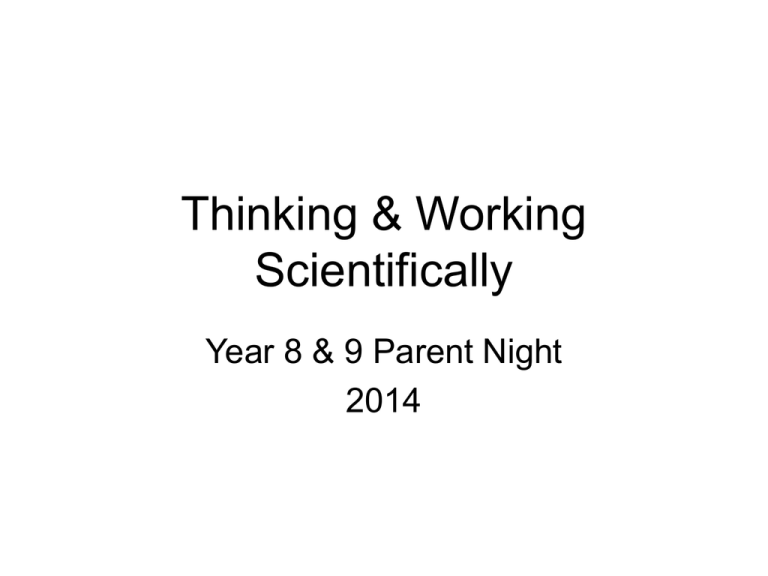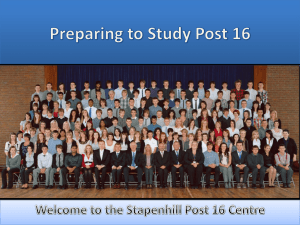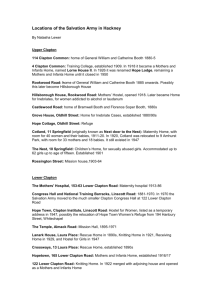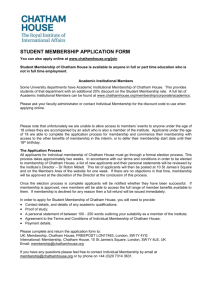Thinking & Working Scientifically
advertisement

Thinking & Working Scientifically Year 8 & 9 Parent Night 2014 Interactive Science Notebooks • http://mrsmorrittscience.weebly.com/intera ctive-science-notebooks.html Thinking Science Australia What is it? Thinking Science is a special program that is designed to improve student thinking skills. It is based around Science, but will improve your general thinking skills, this means that it will benefit you in other subjects as well. What's involved Students will participate in 30 ‘lessons’ spaced over years 8 & 9. This works out to be about one lesson every two weeks. The Theory The program has been developed by scientists who are experts in student learning and ‘Thinking’ One of its concepts is the ‘Zone of Proximal Development’ The Theory Think back to when you learnt the recorder or another instrument in primary school. If you only ever learnt/practised the same simple songs eg ‘Silent Night’, then you would never get better. The Theory If you had to learn a really hard song, you would have no chance and would probably give up. What the music teacher would have done was try and get you to learn songs that were a little bit harder then what you could already play but not so hard that you couldn’t do it. What your teacher was doing was getting you into your Zone of Proximal Development. The Proof Thinking Science has been taught in England for many years. (It is called CASE). What they have been able to show is that students who completed the program in year 7 & 8 (Year 8 & 9 in Western Australia) achieved higher grades in their year 11 GCSE (Year 12 WACE in WA). Mean GCSE 7.5 Grade Year 11 A 1999 GCSE science St. Albans J 6.5 Chatham Girls J B George Abbott JJ E E Sharnbrook 5.5 C Downend Downham Market J E D 3.5 E E J E E Rokeby J E E St. Edmunds J Clapton B E J J Sion Manning 4.5 E E E South Camden E J E E E 2.5 J CASE Schools E Control Schools B National average F 20 30 40 50 60 Mean Year 7 School Intake (Percentile) 70 The Transfer Effect The researchers were also able to show that the Thinking Science program also improved the students grades in other subjects as well. The following graphs illustrate this ‘transfer effect’. The Transfer Effect 7.5 A Mean GCSE Grade 7.5 Maths 1999 St. Albans J A GCSE English 1999 Mean Grade St. Albans Chatham Girls J J 6.5 6.5 Chatham Girls J B B George Abbott George Abbott J 5.5 J C J J 4.5 St. Edmunds Downend J J Sion Manning J E J J E St. Edmunds J C J Clapton J E E B E E J E Control Schools J CASE Schools E B National Average EE E H EE E E Rokeby E E E D E J E J Downend Downham Market E 4.5 E E Rokeby South Camden E EE J Downham Market Clapton D Sion Manning 5.5 E Sharnbrook 3.5 Sharnbrook ESouth Camden J E 3.5 E E E 2.5 2.5 20 30 40 50 60 70 Mean Year 7 School Intake (Percentile) 20 30 40 50 60 70 Mean Year 7 School Intake (percentile Assessments • Bringing the right materials • Being prepared • Reading and using a program











